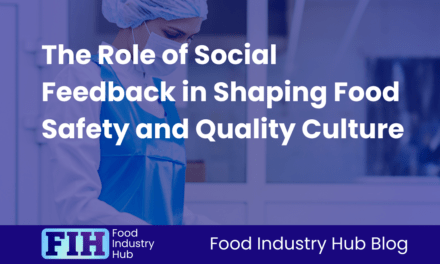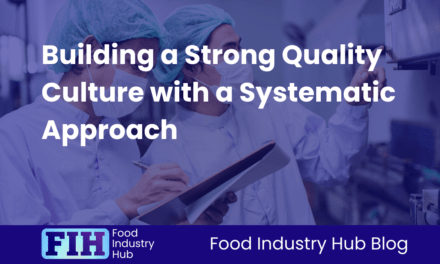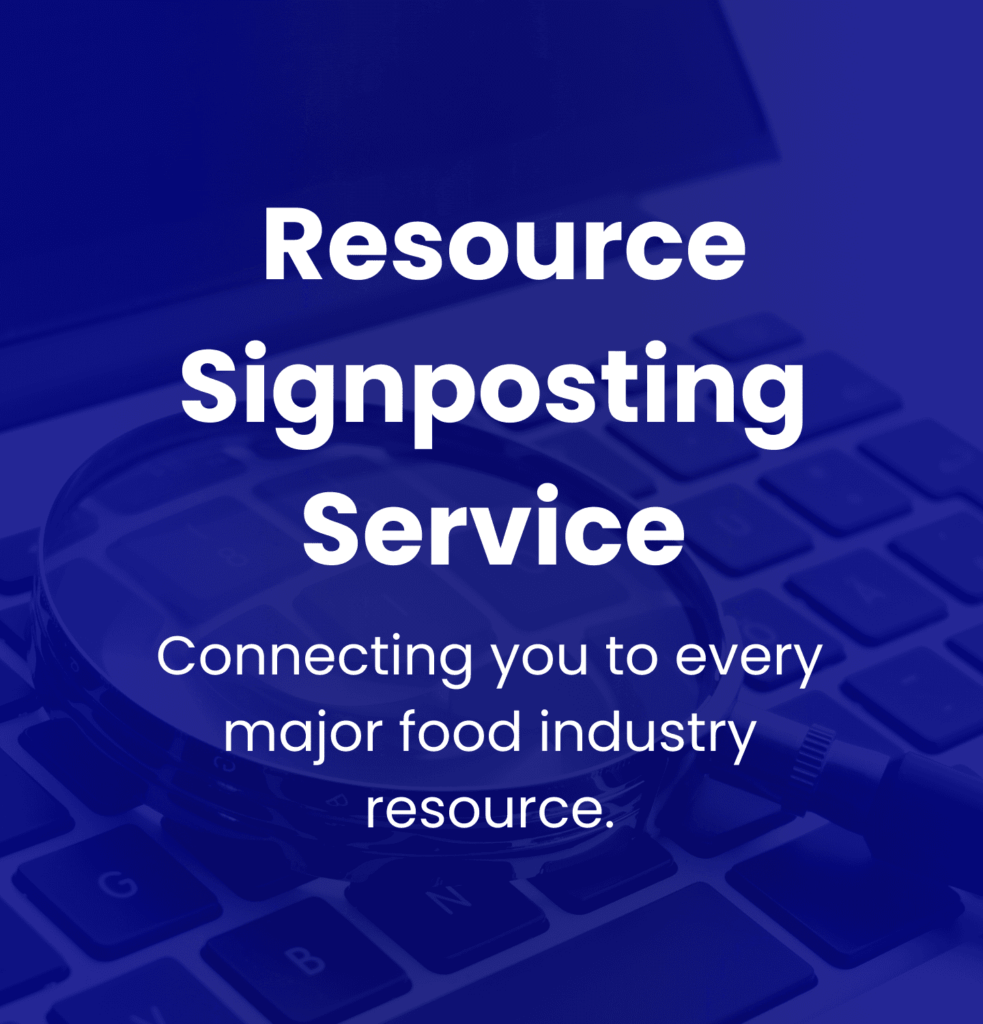Introduction
In food manufacturing, developing and maintaining mature culture of food safety and quality culture is of the utmost importance. That’s where leveraging game theory principles comes into play. Game theory addresses interactions between individuals and/or groups, so taking advantage of this strategic approach can give you a toolset for influencing those interactions. In turn, this can support your efforts to foster a culture that not only ensures the safety and quality of your products but also enhances the overall efficiency of your operations.
But how exactly can game theory help you achieve these goals? Well, buckle up and get ready to explore the fascinating world of game theory in the context of your food manufacturing business. You’re about to discover some powerful strategies that could revolutionise the way you approach food safety and quality.
Table of Contents
Key Takeaways
- Game theory principles can support food safety and quality culture by analysing and improving interactions between stakeholders.
- Identifying key stakeholders and analysing conflicts and cooperation opportunities is supportive of food safety and quality culture development.
- Utilising incentives, such as rewards systems, can promote adherence to quality standards and prioritise food safety.
- Understanding the incentives and upside for each individual or stakeholder group involved in food safety and quality processes enables you to nudge the incentives structure in favour of desired behaviours.
- Collaboration, shared responsibility, and overcoming the tragedy of the commons are essential strategies for fostering a cooperative environment and improving food safety practices.

Understanding Game Theory Basics
Game theory frames interactions (and especially competitive interactions) between individuals and/or groups as games. A game consists of players, actions, and outcomes. Players are the individuals or entities involved in the game, while actions are the decisions or choices available to them. Outcomes are the results or consequences of the players’ actions. Understanding how these elements interact is crucial in determining the best strategy to adopt in a given situation.
To understand game theory basics, it’s important to grasp the fundamental concepts and principles that govern decision-making in interactive or competitive situations. Game theory is a mathematical framework used to understand and predict the behaviour of individuals or organisations in cooperation or competition. It provides insights into how people make choices and interact with each other in a strategic manner.
Another important concept is the notion of payoffs. Payoffs represent the benefits or costs associated with a particular outcome. Players (individuals/groups/entities) aim to maximise their payoffs by taking the actions that lead to the most favourable outcomes for themselves. However, in competitive situations, players must also consider the actions and strategies of their opponents, as their choices directly impact each other’s payoffs.
Importantly, payoffs aren’t always objective or rational. For instance, people will often act in ways that prioritise emotional payoffs such as pride or spite over economical payoffs like financial benefit or equivalent status gains. Game theory doesn’t depend on people behaving like rational economic actors, but looks to understand as closely as possible the range of motivations that appeal to players.

Identifying Key Stakeholders in Your Food Manufacturing Business
Stakeholders are individuals or groups who’ve a vested interest in the success or failure of your business. They can be internal, such as employees and managers, or external, such as customers, suppliers, regulators, and community members. In cases where these stakeholders interact, game theory regards them as ‘players’ and the interactions as ‘games’. By identifying key stakeholders, you can better understand their needs, expectations, and concerns, and develop reasoned expectations around their actions and decisions under particular circumstances.
Internal stakeholders, such as employees and managers, play a crucial role in ensuring the safety and quality of your food products. They’re directly involved in the day-to-day operations and can provide valuable insights and feedback. Engaging them in decision-making processes and fostering a culture of food safety and quality can improve overall business performance. Applying game theory principals in these engagements is strategically useful, because it enables you to properly align the interests of the business with the interests of the internal stakeholders for a more cooperative and mutually beneficial relationship. Think that when food safety and quality ideals are upheld, it should be rewarding/beneficial to both the organisation and to the people responsible for upholding those ideals. The alternative would be a misapplied incentive system that fails to promote food safety and quality outcomes.
External stakeholders, such as customers and suppliers, are equally important. Customers expect safe and high-quality food products, and their satisfaction and loyalty are essential for the success of your business. Suppliers provide the raw materials and ingredients necessary for production, and their reliability and adherence to standards can significantly impact your business operations. Interactions (games) with external stakeholders should be orchestrated so as to be rewarding to all parties in a literal sense – so there should be a reward or payoff that benefits the company as well as external stakeholders, provided food safety and quality is safeguarded/promoted throughout the interaction.
Identifying and engaging with these key stakeholders can help you build strong relationships, improve food safety and quality, and ensure the long-term success of your food manufacturing business. Understanding the needs and motivations of each stakeholder group positions you to reward actions and decisions that promote quality and safety, while punishing actions and decisions that jeopardise quality and safety. They key thing is to accurately determine the motivations and payoffs that appeal to each player.
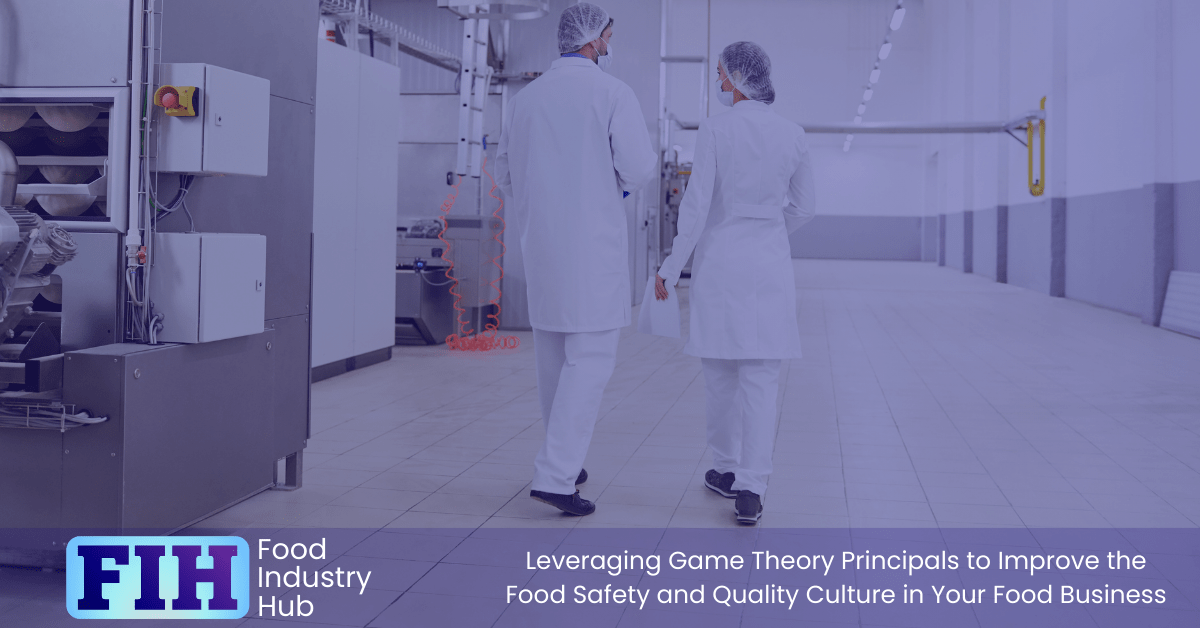
Sign-up for the Food Industry Hub Mail Service
We regularly produce new content for food industry professionals, and the Food Industry Hub Mail Service is the best way to stay up to date with the latest additions.
Signup today to be added to the Food Industry Hub mailing list.
Analysing Potential Conflicts and Cooperation Opportunities
Conflicts can arise from various sources, such as differences in priorities, communication breakdowns, or competing goals. It’s important to identify conflicts early on and address them proactively to prevent them from escalating and negatively impacting the overall food safety and quality culture in your business. By fostering an open and transparent communication environment, you can encourage employees to voice their concerns and work towards resolving conflicts in a collaborative manner.
Conflicts can be resolved by ensuring that different stakeholders’ (players) interests are served by adjusting the incentives/payoffs that are distributed when food safety and quality objectives are met. Alternatively, you can introduce some kind of compensation/reward for stakeholders who incur any cost in cases where their interests cannot be directly served through the fulfilment of food safety and quality objectives.
Cooperation opportunities can arise when individuals or departments work together towards a common goal. You can think of cooperation opportunities as being characterised by a synergy or value-add made possible by the interaction of different stakeholders. By identifying opportunities for cooperation, you can leverage the strengths and expertise of different stakeholders to improve food safety and quality practices. This can include cross-functional collaboration, knowledge sharing, and the establishment of common objectives.

Applying Game Theory to Food Safety Protocols
Game theory provides a framework for analysing and understanding the interactions between different players in a system, and it can be applied to your food safety processes to improve decision-making and outcomes.
One way to apply game theory to food safety protocols is by considering the incentives and motivations of the various stakeholders involved. For example, you can identify the potential conflicts and cooperation opportunities among employees, suppliers, and regulators. By understanding these dynamics, you can design protocols that align the interests of these stakeholders, fostering cooperation and reducing conflicts.
Another application of game theory in food safety systems is through the concept of signalling. Signalling involves sending credible signals to other players to indicate your commitment to safety and quality standards. For instance, you can implement visible and transparent procedures, such as regular audits and inspections, to demonstrate your commitment to food safety. This can help build trust among stakeholders and encourage them to comply with the protocols. In essence, actions speak louder than words – so signalling can be a powerful way for senior management to demonstrate commitment. In this context, the outcome is a display of authenticity in the way food safety and quality is prioritised. This serves to influence the attitudes and behaviours of internal and external stakeholders.
Think about how game theory can help to create an environment where actions and behaviours that promote food safety and quality are encouraged/promoted. This can be through incentives and behavioural reinforcement. Figuratively, look to create a playing field that introduces generalised and targeted biases in favour of food safety and quality ideals.

Utilising Incentives to Promote Adherence to Quality Standards
Incentivise adherence to quality standards to ensure optimal food safety and quality outcomes in your food manufacturing facility. Using incentives is an effective way to motivate your employees and encourage them to consistently meet and exceed the quality standards set in place. By implementing a rewards system, you can create a culture of excellence where employees are driven to prioritise food safety and quality in their daily tasks.
One approach to incentivising adherence to quality standards is by offering performance-based bonuses. You can tie a portion of employees’ compensation to their ability to consistently meet quality targets and maintain a safe working environment. This not only rewards those who consistently perform well but also provides an added incentive for others to improve their performance. Be careful to avoid harmful unintended consequences through financial motivations, though.
Recognition and praise can form another effective incentive. Publicly acknowledging employees who consistently adhere to quality standards can boost morale and motivate others to follow suit. Consider implementing an employee of the month program or hosting regular team meetings to celebrate achievements and highlight outstanding performances.
In addition to monetary rewards and recognition, offering opportunities for career growth and advancement can also incentivise adherence to quality standards. Providing training and development programs that focus on food safety and quality can show employees that their professional growth is important to the organisation. This can create a sense of loyalty and commitment among employees, leading to improved adherence to quality standards.
Ultimately, by utilising incentives, you can foster a culture where quality standards are a top priority, directly aligned with the interests of the people responsible. This won’t only improve food safety outcomes but can also enhance the overall reputation and success of your food manufacturing business.
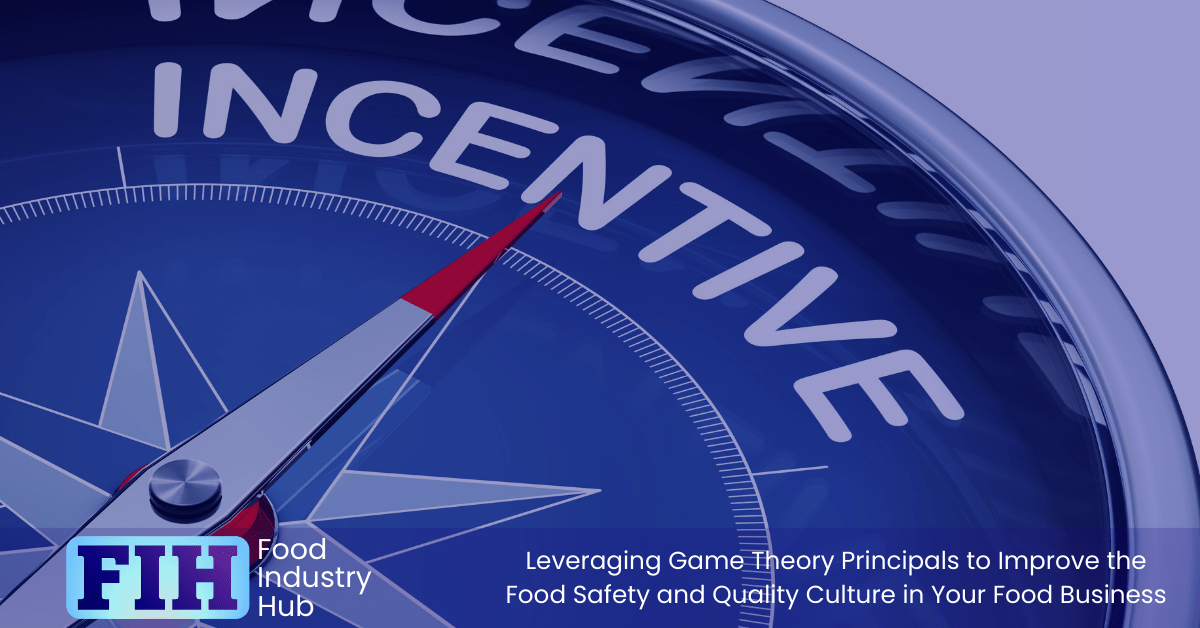
Building Trust and Collaboration Among Employees
To create a culture of trust and collaboration among employees, it’s essential to foster open communication and teamwork within your food manufacturing business. Building trust starts with promoting an environment where employees feel comfortable expressing their opinions and concerns. Encourage open dialogue by implementing regular team meetings and establishing channels for anonymous feedback. By actively listening and addressing employee concerns, you show that their voices are valued, leading to increased trust and engagement. In other words, transparent communication should never be discouraged/punished, as this would cause a misalignment in player reward/payoff.
Collaboration is another crucial aspect of building a strong team culture. Encourage employees to work together on projects and initiatives, fostering a sense of shared responsibility and ownership. Provide opportunities for cross-functional collaboration, allowing different departments to collaborate and share insights. Team-building activities, such as group projects or social events, can also help foster collaboration and enhance employee relationships.
Leadership plays a vital role in building trust and collaboration. Lead by example, showing transparency, integrity, and respect. Communicate clearly and consistently, ensuring that employees understand their roles and responsibilities. Recognise and reward teamwork and collaboration, reinforcing the importance of these values within your organisation.

Enhancing Communication and Information Sharing
Clear and open communication is crucial for ensuring food safety and maintaining a high-quality culture in your business. Start by establishing regular communication channels, such as daily or weekly meetings, where employees can discuss any concerns, share updates, and exchange information. Encourage a culture of transparency and collaboration, where employees feel comfortable speaking up and sharing their knowledge and expertise.
To enhance communication, consider implementing digital tools and platforms that facilitate easy sharing of information. For example, you could use project management software to assign tasks, set deadlines, and track progress. This not only improves efficiency but also ensures that everyone is on the same page. Consider using communication tools like instant messaging or collaboration platforms to enable real-time communication and quick decision-making.
Another effective strategy is to provide training and education on effective communication techniques. This can include workshops on active listening, conflict resolution, and effective feedback. By equipping your employees with the necessary skills, you can foster a culture of effective communication and information sharing.
Implementing Effective Monitoring and Enforcement Measures
Monitoring and enforcement are crucial for reinforcing desired attitudes and behaviours, as well as discouraging deviations from the desired standards. Start by establishing clear and specific guidelines for food safety and quality. Regular inspections and audits should be conducted to ensure compliance with these standards.
Enforcement measures should be in place to address non-compliance. This can include disciplinary actions for employees who fail to adhere to the established standards. It’s important to create a culture of accountability and responsibility, where employees understand the consequences of their actions on food safety and quality. Effectively, this introduced a disincentive against actions that could jeopardise food safety and quality, which works alongside incentives that promote food safety and quality ideals.

Creating a Culture of Accountability and Responsibility
It’s important to create an environment where every employee understands the significance of their role in ensuring food safety and quality. By building a culture of accountability and responsibility, you can empower your team to take ownership of their actions and make decisions that prioritise the well-being of consumers.
Encourage open communication and transparency by implementing regular training sessions and workshops that highlight the significance of food safety and quality. Provide your employees with the necessary tools and resources to carry out their responsibilities effectively. This includes providing them with proper training, clear guidelines, and access to up-to-date information on food safety regulations.
In addition, establish clear metrics and performance indicators to measure accountability and responsibility. Regularly review and assess individual and team performance to identify areas for improvement and provide constructive feedback. Reward and recognise employees who consistently demonstrate accountability and responsibility in their work.
Ensure that your company’s leadership sets a positive example by exhibiting accountability and responsibility in their actions and decisions. Lead by example and hold yourself and your team accountable for maintaining high standards of food safety and quality.
Addressing the Prisoner’s Dilemma in Food Safety Practices
The Prisoner’s Dilemma arises when individuals face a choice between cooperating for the greater good or pursuing their own self-interest.
There is also a social component, as the iconic prisoner’s dilemma presents 2 separate prisoner accomplices with a choice to either betray the other by informing in exchange for lenience, or to remain silent in the hopes that their accomplice will do the same and they both go free. In remaining silent, each prisoner runs the risk that their accomplice might betray them. This is a classic game theory construct with four possible outcomes: both remain silent (and both go free), one informs (and the other is heavily penalised), the other informs (and the first is heavily penalised), or both inform (and both are heavily penalised).
In the context of food safety practices, this dilemma can manifest when employees have to decide whether to report a potential safety issue or remain silent to avoid negative consequences.
To overcome this dilemma, it’s crucial to foster a culture of collaboration and open communication within your food manufacturing business. Encourage employees to work together and make decisions collectively, rather than individually. By involving everyone in the decision-making process, you can create a sense of ownership and shared responsibility for food safety. For root cause analysis, focus on the incident and not the individual.
Building trust among employees is also paramount. Establish clear channels for reporting safety concerns and ensure that employees feel safe and supported when reporting potential issues. Emphasise that reporting isn’t about blaming or punishing individuals, but rather about preventing harm and improving safety practices.
The prisoners’ dilemma is interesting because of the incentives structure, which changes depending on the actions of more than one player taken in isolation – with limited information available to each player. The practical lessons would be to try to reduce extremes in the application of incentives and disincentives, while making information as freely available as possible. This allows individual people (players) to prioritise food safety and quality outcomes rather than being subject to extremes in loss aversion or conflicted by the pursuit of their own selfish interests.
Overcoming the Tragedy of the Commons in Quality Control
In the food manufacturing, the tragedy of the commons refers to the situation where individuals prioritise their own interests over the collective goal of maintaining quality control. This can result in a decline in overall product quality and safety. To overcome this challenge, it’s crucial to establish a system that fosters shared responsibility and accountability among all employees.
Start by clearly defining the roles and responsibilities of each individual involved in the quality control process. This ensures that everyone understands their specific tasks and the importance of their contribution to the overall quality of the products. Encourage open communication and collaboration among team members to facilitate the sharing of information and best practices.
Implement regular performance evaluations and reward systems that recognise and incentivise individuals for their commitment to quality control. This helps to reinforce the importance of maintaining high standards and encourages employees to actively participate in quality control initiatives. Additionally, establish clear consequences for non-compliance to further promote accountability.
Critically, incentives should not persuade individuals to take actions for their own benefit at the detriment of food safety and quality outcomes. So for example, if a production manager is awarded a bonus according to production output, then that could introduce an incentive structure that would encourage the release of all product – regardless of the quality or safety of the product placed on the market. The incentive system might make that manager agnostic to safety and quality.
The tragedy of the commons is a situation caused by a misalignment of interests which results in an individual or minority group benefiting from the detriment of the common state or objective. Think, the common good (of food safety and quality) is subject to tragedy or malignment through a poorly applied or abused rewards system.
Sustaining a Culture of Continuous Improvement
Maintain a culture of continuous improvement by regularly evaluating and updating food safety protocols and practices. This is essential to ensure that your food manufacturing business stays ahead of potential risks and continuously enhances its food safety and quality culture. Start by conducting regular audits and inspections to identify any gaps or areas for improvement in your current protocols. This can include reviewing and updating standard operating procedures, training materials, and equipment maintenance schedules.
In addition to regular evaluations, it’s crucial to foster a culture of open communication and feedback among your employees. Encourage them to share their observations and suggestions for improvement. This can be done through regular team meetings, anonymous suggestion boxes, or even a dedicated communication platform. Actively listen to their feedback and take appropriate action to address any identified issues promptly.
Furthermore, staying informed about the latest industry trends, regulations, and best practices is vital to sustaining a culture of continuous improvement. Attend industry conferences, participate in training programs, and subscribe to relevant publications to stay updated. Implementing a system of continuous learning and professional development for your employees will also contribute to the overall improvement of your food safety and quality culture.
In Summary
So, there you have it! By leveraging game theory principles, you can improve the food safety and quality culture in your food manufacturing business.
Game theory is an expansive and really interesting subject to pursue. This post has outlined a small selection of ways that game theory can be applied in a food manufacturing setting for the development of the food safety and quality culture. Remember, though, the subject of game theory is far more complex and well worth pursuing further.
Through understanding the basics, identifying key stakeholders, analysing conflicts and cooperation opportunities, applying protocols, utilising incentives, optimising resource allocation, incorporating game theory into decision-making, aligning incentives with long-term goals, and sustaining a culture of continuous improvement, you can ensure that your business thrives, and your customers enjoy the highest quality and safest food possible.
From The Food Industry Hub Knowledge Centre
Featured pages from The Food Industry Hub Knowledge Centre:
Further Resources
Food Industry Hub serves the food industry with a range of digital resources for the benefit of both commercial food manufacturers and food industry professionals.
For food manufacturers, we offer integrated management systems that give every user a direct interface with your QMS.
For food industry professionals, we provide an extensive signposting service in addition to informational content we hope you’ll find useful as you face new professional challenges. We have very ambitious plans to expand the range of services offered, and currently present informational content on management, safety and quality, and professional success.


